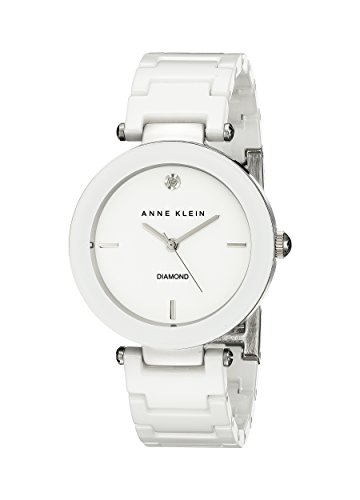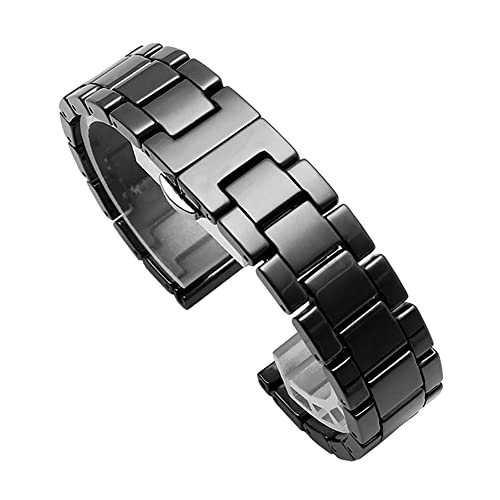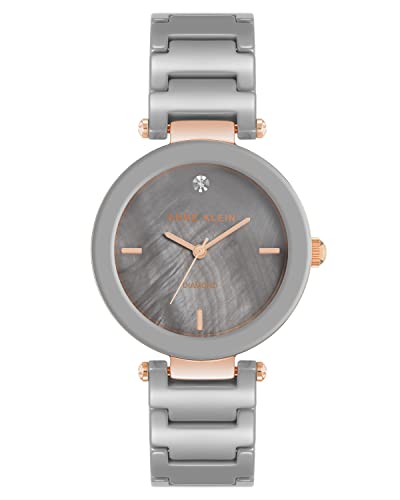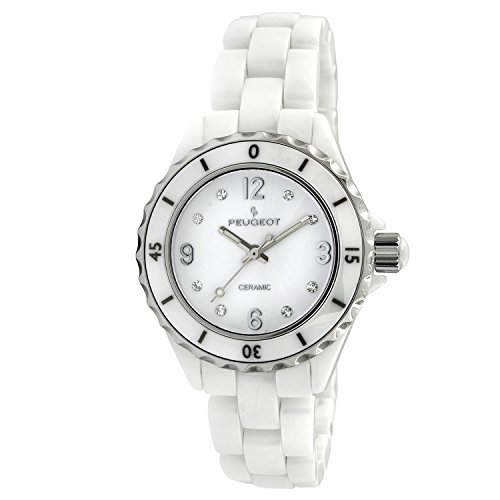Are you tired of constantly worrying about scratching your favorite watch? Do you want to invest in a timepiece that withstands the tests of time? If so, you’ve come to the right place! In this blog post, we will delve into the world of ceramic watches and uncover the truth about their scratch-resistant capabilities. Join us as we explore the durability and long-term maintenance of these elegant timepieces, giving you the peace of mind you deserve. So sit back, relax, and let’s dive into the world of ceramic watches!
Trending Timepieces: Ceramic Watches
What are ceramic watches?
Ceramic watches have gained popularity among watch enthusiasts in recent years. Their unique qualities and sleek design have made them a favorite choice for many. In this blog post, we will provide an overview of ceramic watches, including their composition, manufacturing process, and the key reasons why they are so highly regarded.
Composition of Ceramic Watches
Ceramic watches, also known as ceramic timepieces, are made from a high-tech material called ceramic. This material is created by heating a mixture of inorganic materials at extremely high temperatures. The result is a highly durable, scratch-resistant, and lightweight material that is ideal for watchmaking.
Manufacturing Process
The manufacturing process of ceramic watches involves several steps, ensuring that the final product is both durable and aesthetically pleasing:
- Preparation: Raw ceramic materials are carefully selected and mixed together to create a uniform blend.
- Shaping: The blended material is then shaped into the desired form, such as watch cases, bezels, or straps, using various techniques like injection molding or pressing.
- Sintering: The shaped ceramic parts are fired at ultra-high temperatures, causing them to solidify and gain their characteristic hardness and strength.
- Finishing: The ceramic parts are meticulously polished and treated, giving them a smooth and lustrous surface finish.
Unique Qualities of Ceramic Watches
Ceramic watches possess several unique qualities that set them apart from traditional timepieces:
- Scratch Resistance: Ceramic is highly resistant to scratches, ensuring that your watch will remain in pristine condition even after regular use.
- Lightweight: Ceramic watches are significantly lighter than their stainless steel counterparts, making them more comfortable to wear for extended periods.
- Hypoallergenic: Ceramic is hypoallergenic, making it an excellent choice for individuals with sensitive skin or allergies.
- Color Options: Ceramic watches are available in a wide range of colors, including black, white, gray, and even vibrant hues. This allows for more personalized and fashionable choices.
- Long-lasting: Ceramic watches have excellent longevity, maintaining their vibrant appearance for years to come.
Additionally, ceramic watches offer superior resistance to fading, high temperatures, and UV radiation.
Comparison Table – Ceramic vs. Stainless Steel Watches
To showcase the advantages of ceramic watches, here’s a comparison table outlining the key differences with stainless steel watches:
| Ceramic Watches | Stainless Steel Watches |
|---|---|
| Scratch-resistant | Prone to scratches |
| Lightweight | Relatively heavier |
| Hypoallergenic | May cause allergies |
| Wide range of colors | Limited color options |
| Superior longevity | Potential for tarnishing |
In summary, ceramic watches are not only visually appealing but also possess exceptional durability, scratch resistance, and lightweight characteristics. These unique qualities, along with the wide variety of designs and color options available, make ceramic watches a popular choice amongst watch enthusiasts.
Scratch resistance of ceramic watches
Ceramic watches have gained popularity in recent years due to their stylish appearance and durability. One of the key features that make ceramic watches highly sought after is their remarkable scratch resistance. In this blog section, we will explore the materials used in the construction of ceramic watches that contribute to their scratch resistance and compare them to other watch materials.
The Materials Behind Ceramic Watch’s Scratch Resistance
Ceramic Composites
Ceramic watches are typically made from advanced materials known as ceramic composites. These composites consist of a combination of zirconium oxide and other elements, such as aluminum oxide or titanium carbide. These materials are engineered to create a strong and highly scratch-resistant surface.
Hardness Rating
To quantify the scratch resistance of ceramic watches, the Vickers hardness scale is often used. This scale measures the material’s ability to resist scratches or indentation. Ceramic watches typically have a rating between 8 and 9 on the Mohs scale of mineral hardness, making them highly resistant to everyday wear and tear.
Polycrystalline Structure
Ceramic watches are crafted using a polycrystalline structure, which means they are composed of many small crystals tightly packed together. This structure enhances the watch’s scratch resistance as any scratches that may occur are less likely to propagate through the entire material, ensuring the watch maintains its sleek appearance.
Comparing Ceramic Watches to Other Materials
Stainless Steel
- Ceramic watches are up to four times harder than stainless steel, offering superior scratch resistance.
- Stainless steel watches are prone to scratches and may require regular maintenance to preserve their appearance.
Gold and Platinum
- Ceramic watches provide a higher level of scratch resistance than gold or platinum watches.
- Precious metals like gold and platinum are softer and more prone to scratching, which can diminish their value over time.
Titanium
- Ceramic watches have a comparable level of scratch resistance to titanium watches.
- However, ceramic watches often have a more elegant and luxurious aesthetic compared to titanium watches.
Benefits of Scratch Resistance in Ceramic Watches
The scratch resistance of ceramic watches offers several benefits to watch enthusiasts. Here are some key points to consider:
- Long-lasting aesthetic appeal – Ceramic watches maintain their pristine appearance, even after extended use, thanks to their superior scratch resistance.
- Reduced maintenance – Unlike watches made from softer materials, ceramic watches require minimal maintenance and are less likely to show signs of wear and tear.
- Increased durability – The scratch resistance of ceramic watches ensures they can withstand everyday activities, making them suitable for both casual and formal occasions.
- Investment value – Ceramic watches retain their value over time due to their scratch resistance, making them a wise investment choice for watch collectors.
In conclusion, ceramic watches are highly regarded for their remarkable scratch resistance, thanks to the materials and craftsmanship used in their construction. Their ability to withstand scratches and maintain their elegant appearance make them an attractive choice for watch enthusiasts.
Factors affecting scratch resistance
Ceramic watches have gained popularity in recent years due to their stylish appearance and durability. However, it is essential to understand that despite their toughness, ceramic watches are not completely scratch-proof. Several factors can impact the scratch resistance of these timepieces. In this blog section, we will delve into the details of these factors, the importance of proper care and maintenance, and highlight the vulnerabilities of ceramic watches in certain activities or environments.
1. Ceramic Material Composition
The composition of the ceramic material used in the watch plays a crucial role in determining its scratch resistance. Various factors influence the hardness and susceptibility to scratches.
- Zirconium oxide-based ceramic: This material, commonly known as Zirconia or ZrO2, exhibits exceptional scratch resistance due to its high hardness score on the Mohs scale. It ranks only slightly below diamonds, making it highly resistant to scratches from most everyday objects.
- Sapphire-based ceramic: This type of ceramic contains sapphire crystals in its composition, providing superior scratch resistance. Sapphire ranks 9 on the Mohs scale, making it harder than most materials used in daily encounters, such as keys or coins.
2. Coating and Finishing
The coating and finishing applied to ceramic watches can significantly enhance their scratch resistance. Manufacturers often employ advanced technologies to improve the hardness and durability of the ceramic surface.
- Diamond-like Carbon (DLC) Coating: This coating technique involves the deposition of a thin layer of carbon using plasma-enhanced chemical vapor deposition. The resulting carbon coating ensures superior hardness, making the ceramic watch highly resistant to scratches.
- Polishing and Brushing: Ceramic watches undergo meticulous polishing and brushing processes to enhance their scratch resistance. These finishing techniques create a smooth, abrasion-resistant surface, reducing the risk of scratches.
3. Care and Maintenance
Proper care and maintenance are necessary to preserve the scratch resistance of ceramic watches. Here are some essential tips to keep your ceramic watch in pristine condition:
- Avoid Impact: Ceramic is relatively brittle compared to other watch materials, so avoiding impacts or dropping your watch is crucial to maintaining its scratch resistance.
- Regular Cleaning: Regularly clean your ceramic watch with a soft cloth and mild soap to remove dirt and prevent scratches caused by debris.
- Avoid Chemical Exposure: Limit exposure to harsh chemicals, such as household cleaners or solvents, as they may weaken the ceramic material and compromise its scratch resistance.
4. Vulnerabilities to Activities and Environments
While ceramic watches offer excellent scratch resistance under normal conditions, certain activities or environments can pose a greater risk. Being aware of these vulnerabilities can help you keep your ceramic watch scratch-free.
- Extreme Sports or Impactful Activities: Engaging in activities that involve heavy impact, intense vibrations, or rough conditions, such as rock climbing, may increase the risk of scratching or chipping your ceramic watch.
- Swimming or Submerging: Although ceramic watches are water-resistant, exposure to chlorine or saltwater during swimming or diving can potentially damage the ceramic surface and compromise its scratch resistance.
- Sharp Edges or Rough Surfaces: Ceramic watches may be susceptible to scratches when in contact with sharp edges, rough surfaces, or abrasive materials. Be cautious when wearing your watch in such environments.
By understanding these factors, taking proper care of your ceramic watch, and being aware of its vulnerabilities, you can ensure the longevity and scratch resistance of your timepiece. Remember that while ceramic watches offer impressive durability, they are not invincible. So, enjoy your ceramic watch, but handle it with care to maintain its stunning appearance for years to come.
Remember, taking good care of your watch ensures it will last. Don’t neglect the basics like regular cleaning and gentle handling. A few extra steps and precautions can go a long way in maximizing the scratch resistance of your ceramic watch.
Maintaining ceramic watches
Ceramic watches have gained popularity due to their sleek, modern appearance and durability. However, like any other timepiece, ceramic watches require proper care and maintenance to ensure they stay in pristine condition. In this blog section, we will share practical tips and guidelines to help you maintain your ceramic watch, minimize the risk of scratches, and keep it looking its best for years to come.
Cleaning Techniques:
- Avoid abrasive cleaners: When cleaning your ceramic watch, steer clear of harsh chemicals or abrasive cleaners that can damage the ceramic surface. Stick to mild soapy water or use specialized watch cleaning solutions.
- Soft cloth or brush: Gently wipe the ceramic surface with a soft, lint-free cloth or use a soft brush to remove any dirt or dust particles. Be cautious not to apply excessive pressure, as it may result in micro-scratches.
- Avoid water exposure: Although ceramic watches are generally water-resistant, prolonged exposure to water can still cause damage. It is best to remove your watch before swimming or showering to prevent potential water damage.
- Be mindful of straps: If your ceramic watch has a ceramic strap, clean it using the same techniques mentioned above. If your watch has a leather or fabric strap, follow the manufacturer’s recommendations for cleaning and maintenance.
Storage Recommendations:
- Separate from other jewelry: To avoid scratches, store your ceramic watch separately in a soft cloth or a dedicated watch box. This will prevent it from coming into contact with other metal or abrasive surfaces that may cause damage.
- Avoid extreme temperatures: High or low temperatures can affect the durability and performance of your ceramic watch. Store it in a cool, dry environment, and avoid leaving it exposed to direct sunlight or extreme heat.
- Regular servicing: Ceramic watches, like any other timepiece, require regular servicing. It is recommended to have your ceramic watch serviced by a professional watchmaker every 2-3 years. They will inspect the watch, replace worn-out parts, and ensure its proper functioning.
Best Practices:
- Avoid impact: While ceramic is highly durable, it is not indestructible. Avoid subjecting your ceramic watch to unnecessary shock or impact, as it may chip or crack the ceramic material.
- Follow manufacturer guidelines: Each ceramic watch may have specific care instructions provided by the manufacturer. It is important to read and follow these guidelines to ensure the longevity of your timepiece.
- Avoid contact with chemicals: Ceramic watches should be kept away from chemicals such as solvents, perfumes, or harsh cleaning agents. These substances can potentially damage the ceramic surface and compromise its appearance.
Key Benefits of Ceramic Watches:
Here are some key points highlighting the benefits of ceramic watches:
- Durability: Ceramic watches are highly resistant to scratches and color fading, making them a reliable choice for everyday wear.
- Hypoallergenic: Ceramic is hypoallergenic, making it suitable for individuals with sensitive skin or allergies.
- Lightweight: Ceramic watches are lighter compared to many other materials, offering comfort in daily use.
- Unique aesthetics: The sleek, modern design of ceramic watches adds a touch of elegance to any outfit.
Remember, by following these maintenance tips and best practices, you can ensure that your ceramic watch remains a timeless and stylish accessory for many years to come.
This blog section is for informational purposes only, and it is always recommended to consult the manufacturer’s specific guidelines for your ceramic watch’s care and maintenance.
The Verdict: Ceramic Watches and Scratches
In summary, ceramic watches are indeed scratches-resistant, but it is important to take precautions and care for them properly to maintain their optimal condition.











![BISS INTL Suede Microfiber Cleaning Cloths for Glasses 6-Pack (Gray) - All-Purpose Soft Cloth, Scratch Free, Streak Free, Cleans Glasses, Screens for iPhone, iPad, Laptops, TV Screens [6" x 7"]](https://m.media-amazon.com/images/I/41b2QNpDAbL.jpg)

